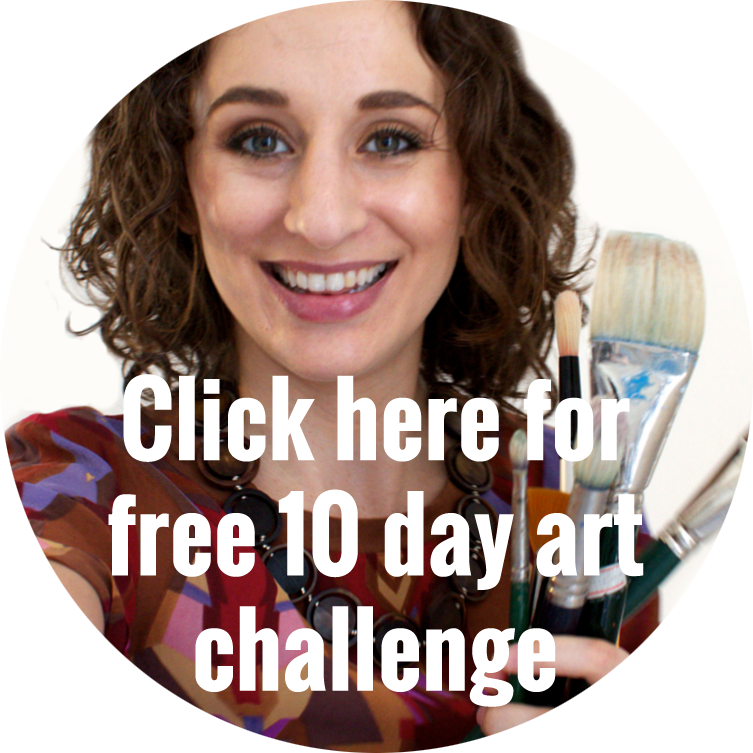You can sometimes set yourself up for failure. I did.
I kept building up the return to my artist practice. “When I…” or “once this…” There was always a reason, and some would argue, justified, for being away from my art. I was getting married. I was moving. I was unpacking. And yet, after months of this focus on other things, while still thinking about creative projects, I created a quiet, insidious thing. Expectation. My return must be grand. A grandiose thing full of applause, public approval, and an amazing jump in skill. And with that quiet expectation, came fear. The perfectionist returns. Don’t do it if you can’t do it perfectly, if you can’t be the best. And each day I would find another chore to take me away from it all. “Well, I’m enjoying writing for Artist Strong right now I’ll put my energy into that.” Or, “let’s network for more Creative Spirit interviews, it’s going so well!” Yes, perhaps these are important tasks with my larger goals in mind, but nothing should be at the expense of something else. And that was the purpose. It was easier to work on tasks I felt comfortable with than to return to something I love. “I haven’t painted in so long, what if I’ve lost it?” It didn’t matter that I could do drawings of Istanbul in my sketchbook or take photographs while I wasn’t painting. It was painting that was going to be hard.
I started reading the Artists Guide (AL) again. I started reading through it thinking thoughts of glass half empty. How can I write an artist statement when I don’t know what I’m making? How can I realize a goal of being self-sufficient via my own art? Yet, the text reminded me it is through small tasks that you can reengage with something that you need to, that you find daunting, or in my case, downright scary. Who needs to watch X-Files (I don’t care that I’m showing my age, I still love this show) when you have your own personal fears that are much more resounding and real. So I heeded Jackie Battenfield’s advice and I started a list of small tasks, excuse me, small achievements!
Task One. Go through sketchbook and choose two different ideas I’ve played with, decide which ones you want to trial.
Task Two. Take preparatory photographs and sketches for reference.
Task Three. Prep Canvas.
Tasks one and two are easy, as having been in weird in between stages of moving and changing jobs, etc. I could always quickly sketch out ideas. It has been the execution I have been and feel so alienated from. So Task three was an important and good way to reintegrate. I took a large, old canvas I’ve painted several projects on. The most recent one had small hexagonal paper shapes pasted on it. I started ripping them off. It was a great thing, to get dirty and literally rip apart an older work that it was time to let go of. Like my fear. It is now in states of being gessoed for the next big painting I plan to execute. And yet, I was still feeling fear.
Task Four: Trial painting.
This means no more talk, no more excuses. Time to get out the paint and start making. I came into the studio, dumped out all of my acrylics and found a nearby image I hope to use in a yoga-inspired artwork. And I started painting on an old canvas board already prepped. No judgement, no assuming of intent, idea, goal, just creation. Would I remember how to do it all? Would it be easy to return to painting again?
It’s not finished, but it’s looking good.
Task Five: Repeat. (Continue to make art.)
Just like writing, the visual arts demands practice. And for all the words I write everyday only a select amount is selected, edited and shared with many via my blog or eventually via Amazon like my ebook. So guess what. You gotta paint. A lot. And maybe the big project is too daunting one day, it means paint something else smaller, like I did for my trial work. Small trial pieces are a great way to build confidence in an idea and help you decide if you like something enough to build it into something bigger. Everything takes small steps. Sometimes it is easier to get into the groove again by acknowledging them and creating these small steps, as a bridge, to return to your creative practice.
It’s not hard to return to something you love. All it takes is baby steps. Take a breath and a step, one foot at a time.
BE COURAGEOUSLY CREATIVE: List some small steps you can take today that are tasks that help you reach towards a larger goal.
Like what you see? Want more? Follow Artist Strong on Twitter or Facebook, or Carrie on Google Plus.




Trackbacks/Pingbacks